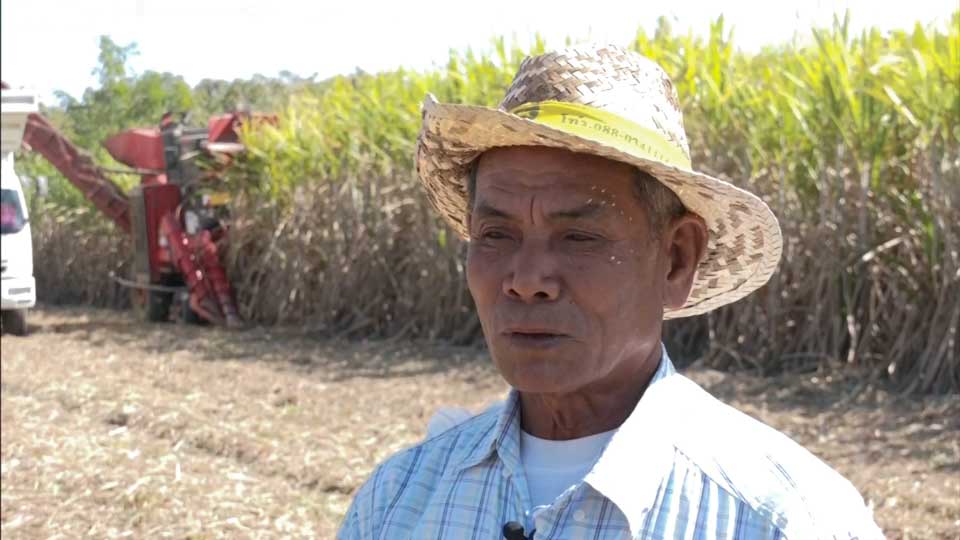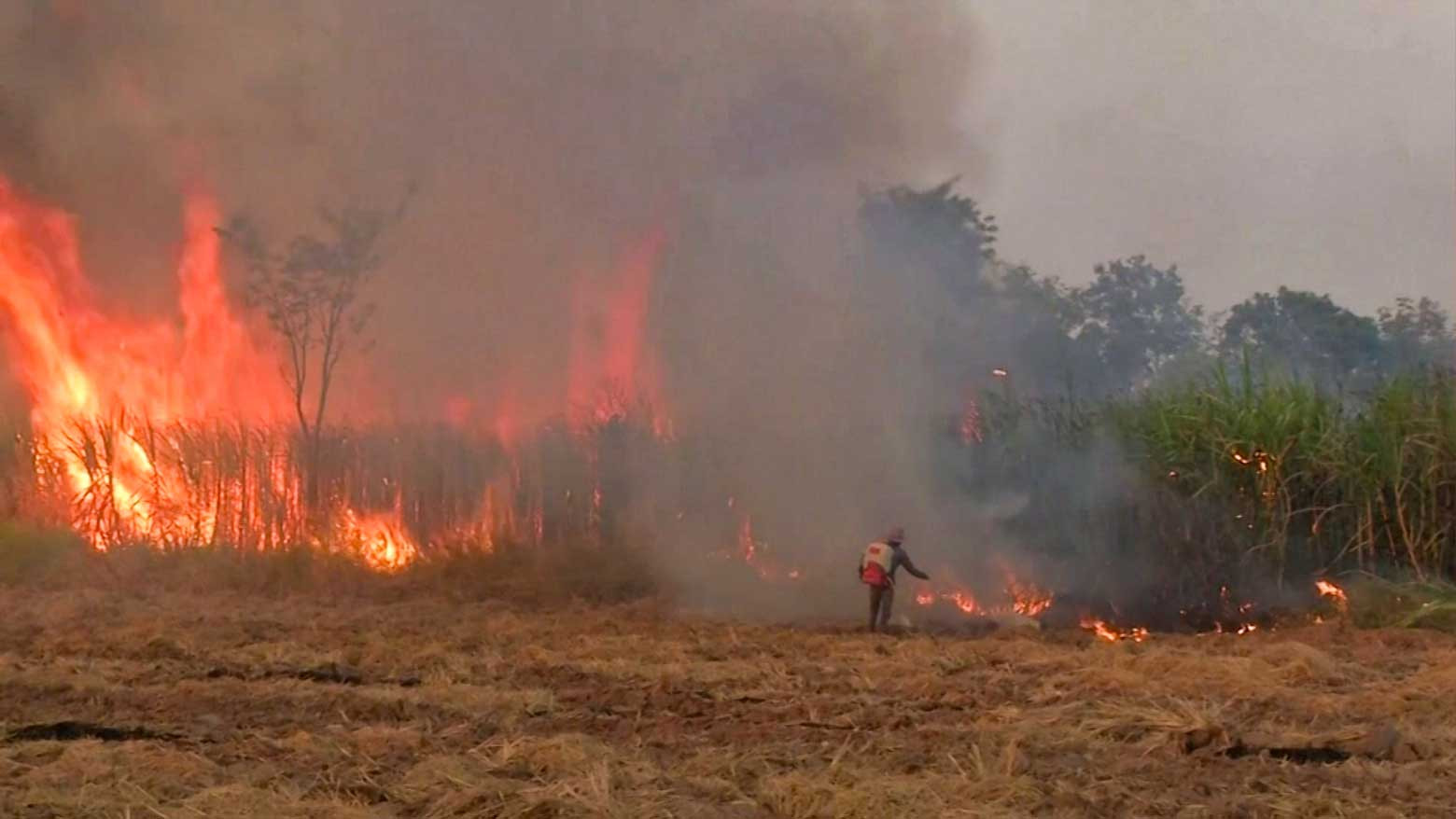It's harvest time in Thailand's northern city of Udon Thani, a sugarcane heartland, and farmer Lamprai Khonsawan is collecting his crop the old-fashioned way, by setting fire to his fields. The flames strip away dry leaves and expose the stalks, where the sugar is. It's much more efficient than hacking at the plants with a knife, and for farmers like Lamprai, it's the only method that's financially viable.
But it comes with a massive environmental price tag. As the fields burn, plumes of black smoke head skyward. The Thai government says this practice is one of the main reasons the country suffers air pollution that is double the World Health Organization's safe threshold and the UN environment programme says is to blame for around 50,000 deaths a year.
The authorities want farmers to change their methods, and have been offering subsidies to those who harvest without burning, and put limits on how much burned cane a sugar mill is allowed to buy. They are aiming to cut the percentage of sugar fields being burned to 5% by the end of the next fiscal year. Last year, the figure was 50%.
"We only burn the crops because it's more efficient," Lamprai says, and explains that even with government subsidies, the price of sugar is simply too low to consider any other method. "For the past two to three years, the market price has fallen below $33 a ton. If this can be improved, I believe it would stop the burning."

Big machines, big prices
The most efficient alternative to fire is a modern harvester. The machines can reportedly strip and cut the sugarcane 100 times faster than manual labor, but at around $200,000 each they're beyond the means of most of the smallholders who account for most of the burning.
The government has a low-interest-rate loan scheme for anyone who wants to invest in one, but with farmers only earning an average of $2,600 dollars a year and many already deep in debt, many are reluctant to take up that offer.
Sugar mills pressing for change
The sugar mills that buy the harvested cane have an interest in convincing farmers to stop burning. Government regulations only 20% of their purchases can be burned cane this season.
The owners of the Kaset Phol mill in owns 18 of the harvesters and rents them to farmers at $6 dollars per ton harvested.
But the firm's Executive Vice President, Furuya Hiroshi, says it's still not enough to stop all burning activities. "We have to look at why they still continue burning despite being told to stop."
Lamprai Khonsawan is one of Kaset Phol's customers and uses the machines on 40 of the company's 198 acres of fields. For the rest, he sticks to his slash-and-burn technique. He says it saves time and money, and allows him to harvest in places large machines cannot access. People with smaller plots say even the rental cost is beyond their means, and they don't have space to accommodate the machines anyway.
Thailand is one of the world's top 10 exporters of agriculture, but the majority of the people who drive that industry are in the lowest 30% of Thai households economically. The country is also Southeast Asia's largest economy after Indonesia but the World Bank says its poverty ratio has increased in recent years.
And for now, many of the smallholders in Udon Thani have no choice but to burn their fields to stay in business.

